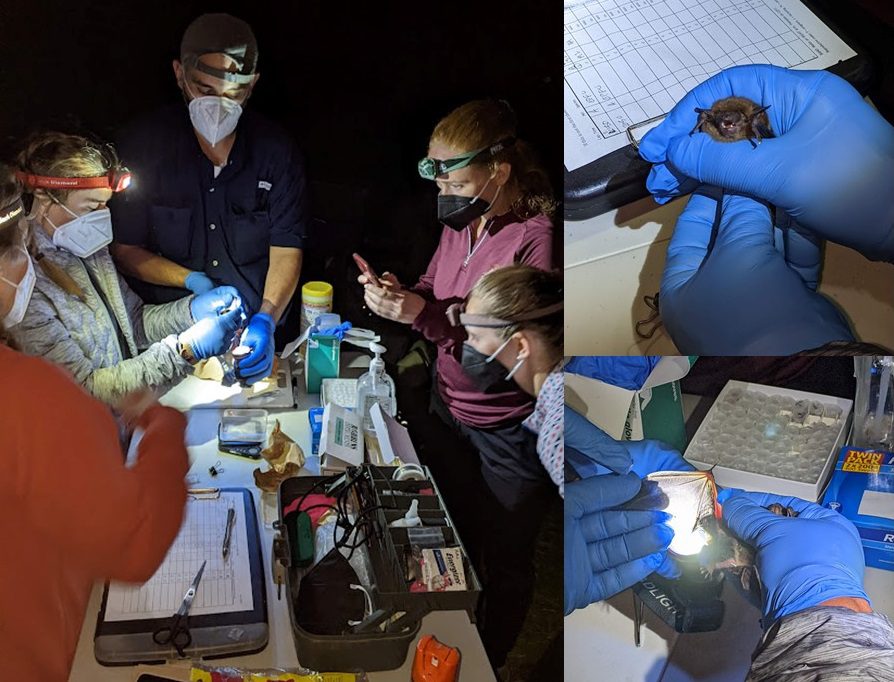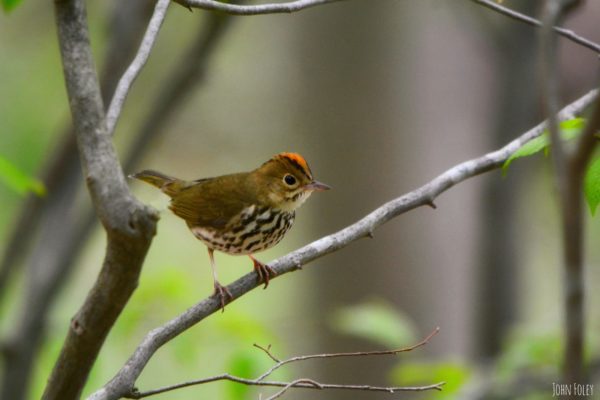
Virginia Tech Bat Researchers Visit Great Hollow
Great Hollow was pleased to host renowned bat biologist, W. Mark Ford, and graduate students from his lab at the Virginia Tech/USGS Cooperative Fish & Wildlife Research Unit, as they travelled to Connecticut to capture bats for several ongoing research projects. The primary goal was to capture Little Brown Bats (Myotis lucifugus), a once-common species whose populations have been decimated by the introduced disease, “white-nose syndrome.” Dr. Ford and his students are attempting to find and capture Little Brown Bats at various sites throughout the eastern U.S. to collect DNA samples and assess the amount of genetic diversity remaining within the overall population. After a more than 90% crash from white-nose syndrome in recent years, scientists are concerned about genetic diversity loss and possible inbreeding effects that could hinder the species’ ability to recover. They are also interested in finding out if there is anything genetically unique about the surviving bats that distinguishes them from the millions that have died from the disease. Dr. Ford’s team captured the Little Brown Bats at Great Hollow using mist-nets set up near our bat boxes and some suspected foraging areas around the preserve. After safely removing them from the net, the researchers collected a small biopsy from the wing to analyze for DNA, recorded their sex, weight, and signs of reproductive activity, marked them with a small tag, and then released them unharmed. The data from Great Hollow will help the team understand the genetic diversity of the Little Brown Bat population in western Connecticut/southeastern New York, as they continue to fill in the blanks across the species’ entire eastern North American range.

 Previous Post
Previous Post Next Post
Next Post